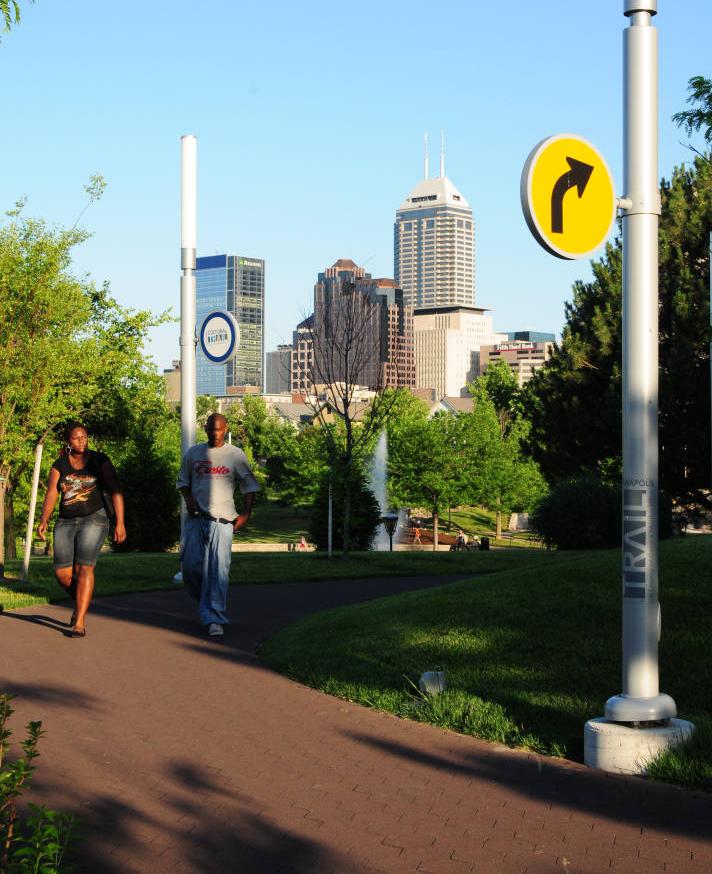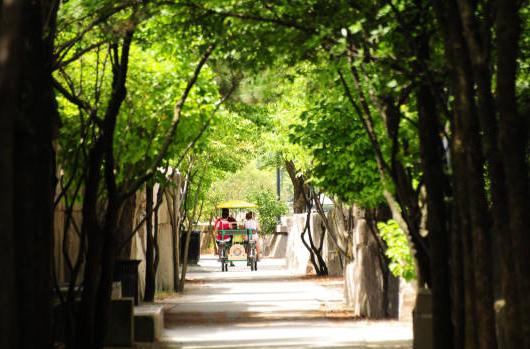The Indianapolis Cultural Trail: A legacy of Gene and Marilyn Glick is an eight-mile multi-use pathway that winds through downtown Indianapolis and connects six neighborhoods designated as significant cultural districts.

In 1999, Cultural Development Commissions were charged with finding ways to promote six downtown Indianapolis neighborhoods newly designated as cultural districts. Brian Payne, a commissioner and president of the envisioned connecting , , the , , the , and with an urban version of the . His vision kick-started what culminated in a $63 million project funded through local philanthropies, notably a $15 million pledge from and , and a $20.5 million grant from the U.S. Department of Transportation.
Kevin Osburn and his team at Rundell Ernstberger Associates designed the public right-of-way that forms the Trail, which was completed in 2012. The nonprofit Indianapolis Cultural Trail, Inc. manages it, develops programming, and maintains the gardens and public art found along its length.
In 2014, the Indiana Pacers Bike Share program was initiated to provide a means for navigating the Trail. An expansion in 2019 doubled the number of bikes and stations to 575 and 50, respectively. Four distinct Indy Cultural Food Tours are part of the programming that offers walking and cycling tours along the Trail. Experienced guides take patrons on a culinary excursion along the Trail while learning how the Trail has transformed Indianapolis. Over 1 million people use the trail annually.

In February 2020, the first expansion to the Trail was announced. The expansion aims to add two miles of trail to two key areas, Indiana Avenue and South Street from New Jersey Street to Capitol Avenue. The expansions will bring historically and culturally significant neighborhoods and destinations that have been disconnected from downtown into closer proximity to the city center.

Help improve this entry
Contribute information, offer corrections, suggest images.
You can also recommend new entries related to this topic.